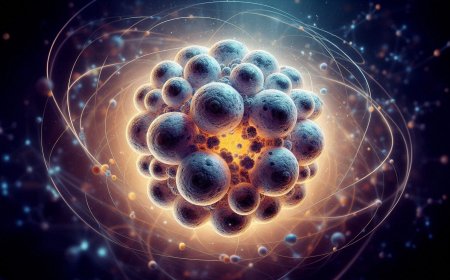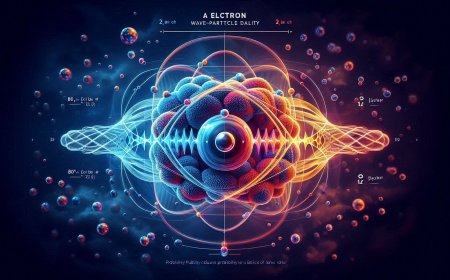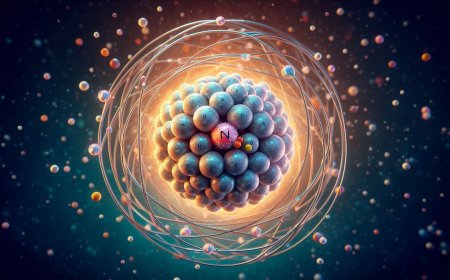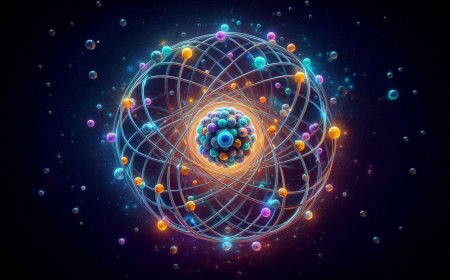Neutron: The Silent Force of the Atomic World
Explore the fascinating role of neutrons in atomic stability, isotope formation, and nuclear reactions. Discover how neutrons contribute to nuclear energy, scientific research, and medical applications.
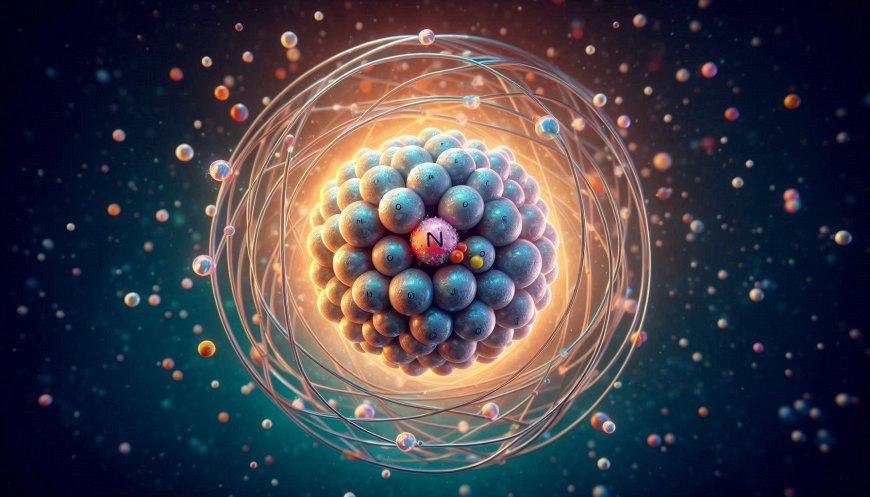
In the vast and complex world of chemistry, the neutron stands as one of the most intriguing subatomic particles. Often overshadowed by its charged counterparts—the proton and the electron—the neutron plays a quiet yet vital role in the stability and behavior of atoms. First discovered in 1932 by British physicist James Chadwick, neutrons have become a fundamental part of our understanding of atomic structure, nuclear reactions, and even the forces that hold our universe together.
What is a Neutron?
Neutrons are subatomic particles located in the nucleus of an atom. They carry no electrical charge, which makes them unique compared to protons, which are positively charged, and electrons, which are negatively charged. A neutron’s mass is nearly the same as a proton’s, and together, they account for nearly all of an atom's mass. Despite their neutrality, neutrons play a crucial role in the stability of atoms.
Neutrons and Atomic Stability
One of the primary roles of neutrons is to provide stability to the atomic nucleus. Positively charged protons naturally repel each other due to electromagnetic forces. Without neutrons, these forces would push the protons apart, destabilizing the nucleus. Neutrons act as a buffer, using the strong nuclear force to counteract the repulsive electromagnetic force between protons, binding them tightly within the nucleus. This stability is essential for the formation of atoms beyond hydrogen and underlies the existence of all matter in the universe.
The Role of Neutrons in Isotopes
Neutrons are also responsible for creating isotopes, which are different forms of the same element that have varying numbers of neutrons. For example, carbon has three naturally occurring isotopes: carbon-12, carbon-13, and carbon-14. Each of these isotopes has six protons but differs in the number of neutrons. This variation in neutron count can result in isotopes with different properties. Carbon-14, for instance, is radioactive and is widely used in radiocarbon dating to determine the age of ancient artifacts.
Neutrons and Nuclear Reactions
Neutrons are crucial in initiating nuclear reactions, especially nuclear fission, the process by which the nucleus of an atom splits into two or more smaller nuclei. When a neutron collides with a heavy atom like uranium-235, it can cause the atom to split, releasing a tremendous amount of energy and additional neutrons. This chain reaction forms the basis for nuclear power generation, as well as the destructive force of nuclear weapons. Controlled nuclear reactions are harnessed in power plants, where neutrons help generate electricity that powers homes and industries around the world.
Applications of Neutrons Beyond Energy
Beyond nuclear power, neutrons have a range of applications across scientific research, industry, and medicine. In materials science, neutron scattering techniques allow researchers to analyze the atomic structure of materials, advancing fields such as nanotechnology and metallurgy. In the medical field, neutron beams are used in cancer treatments through a process called neutron therapy, which can target tumors more precisely than other radiation therapies.
The Future of Neutron Research
As scientists continue to study neutrons, they are unlocking new insights into the fabric of matter itself. Neutron stars, for instance, are remnants of massive stars that have exploded in supernovae and are so dense that their atoms are essentially crushed together. Studying these stars provides clues about extreme states of matter and the fundamental forces of the universe. On Earth, advancements in neutron-based imaging and quantum research promise to open new doors in materials science, technology, and medicine.
Conclusion
Though neutral and nearly invisible to the naked eye, neutrons are anything but insignificant. Their unique properties hold atoms together, power the sun, and even fuel the energy in our homes. From providing stability to elements to shaping the future of clean energy, neutrons are silent yet powerful forces that make life and the universe possible. As we deepen our understanding of this fascinating particle, we not only unravel more about the mysteries of the atomic world but also edge closer to innovations that could redefine our future.
Neutrons: the unassuming yet extraordinary champions of chemistry and physics.
What's Your Reaction?











